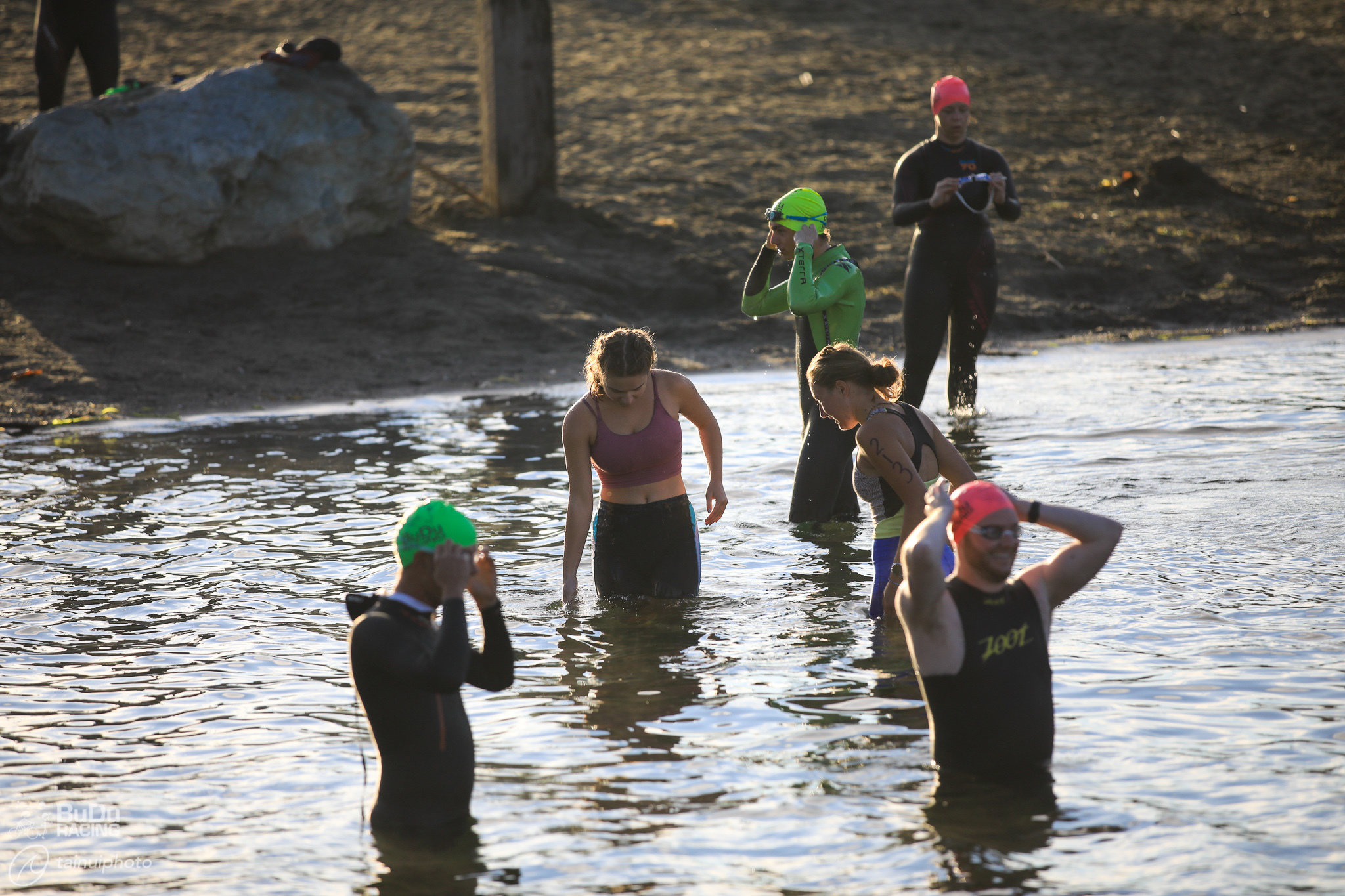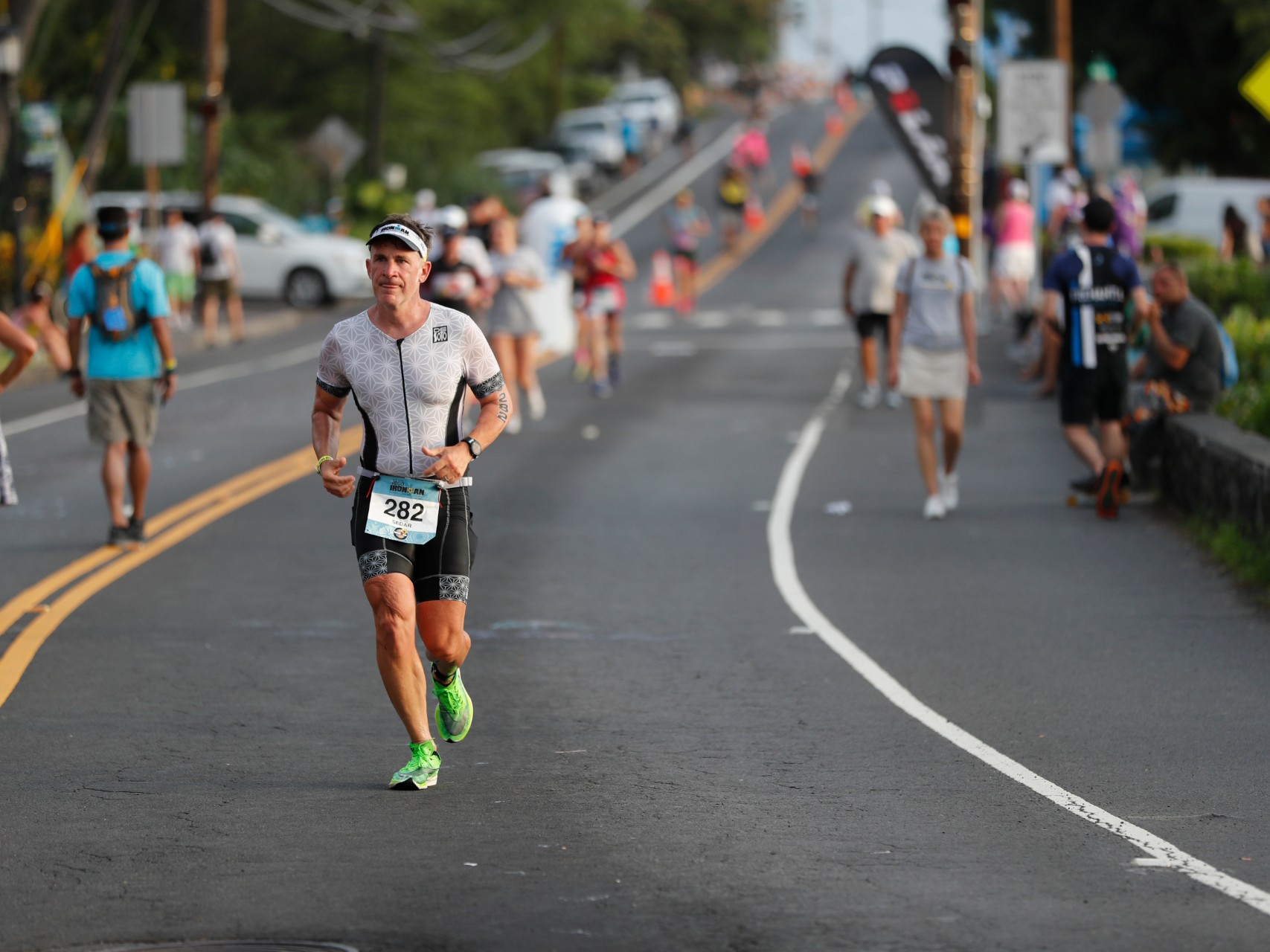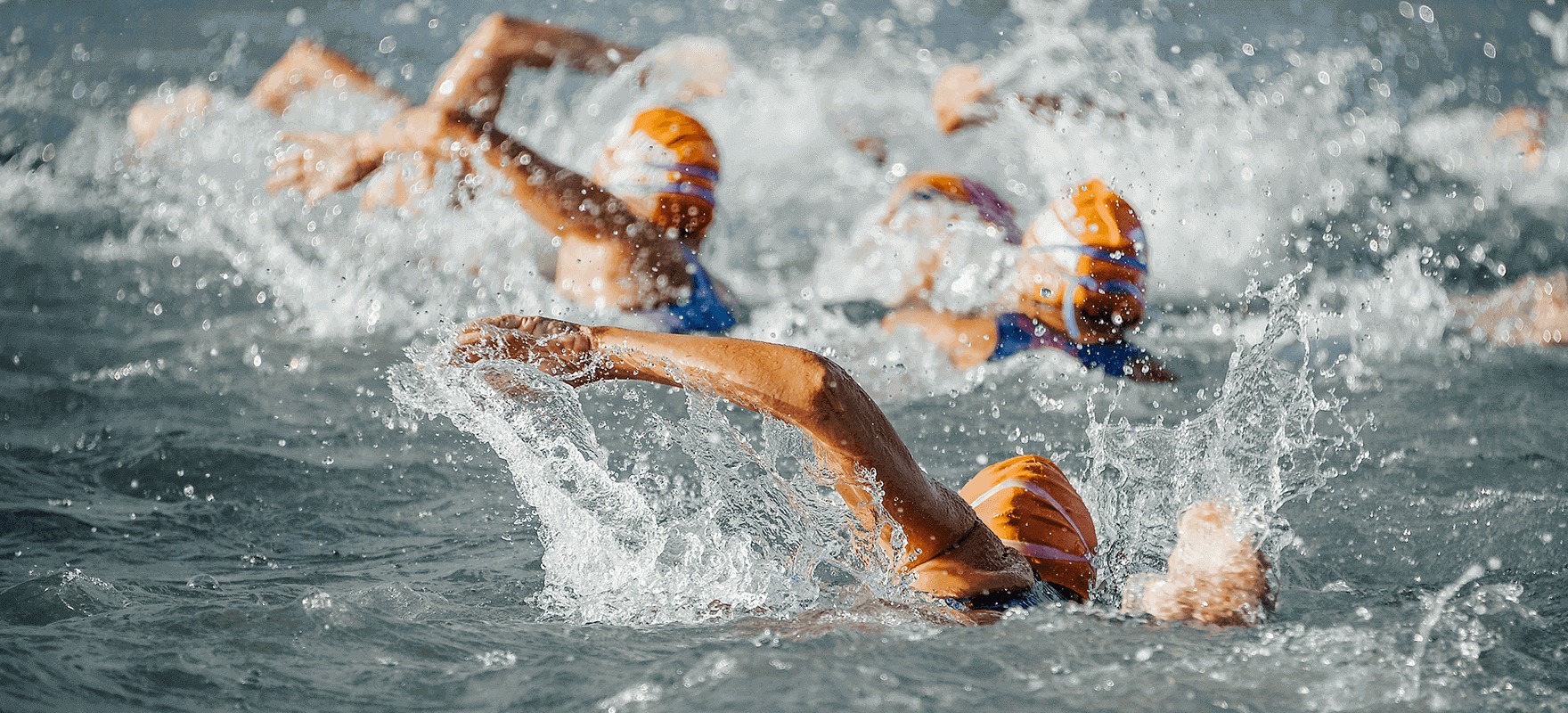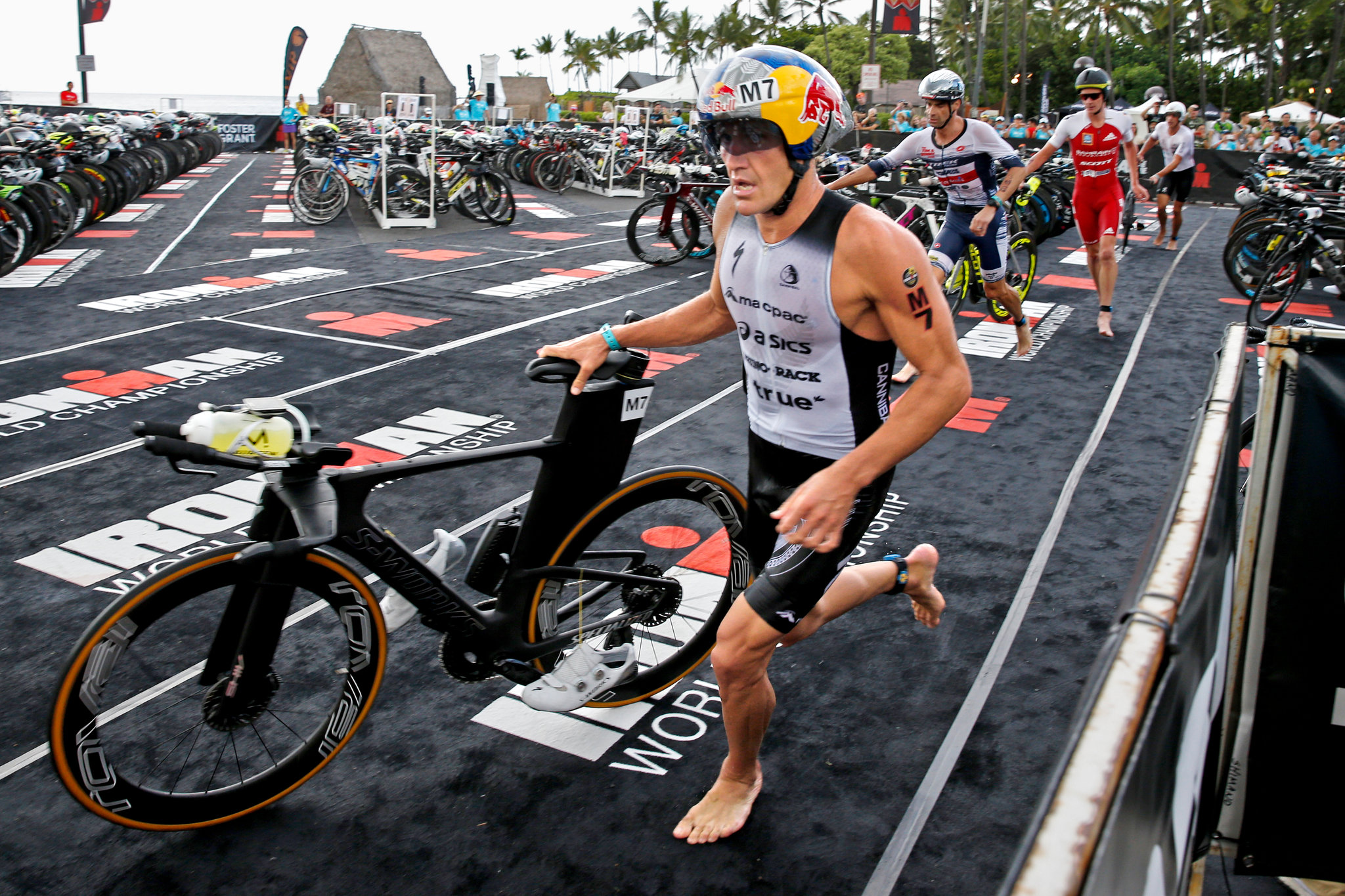Home>Misc>Featured>Why Doesn’t Lake Stevens Have The Triathlon Anymore


Featured
Why Doesn’t Lake Stevens Have The Triathlon Anymore
Published: August 12, 2023
Discover why Lake Stevens no longer hosts the featured triathlon event. Uncover the reasons behind this change and explore alternative options for triathlon enthusiasts.
Introduction
Welcome to the thrilling world of triathlons! For years, the Lake Stevens Triathlon was a prominent event on the calendar for athletes and sports enthusiasts alike. This highly anticipated competition showcased the endurance and determination of participants as they swam, biked, and ran their way to the finish line. However, in recent years, the Lake Stevens Triathlon has mysteriously disappeared from the annual schedule, leaving many wondering why this exciting event is no longer taking place.
The Lake Stevens Triathlon gained a reputation for its picturesque setting, challenging course, and vibrant atmosphere. Participants from all over the country would eagerly flock to Lake Stevens, Washington, to compete in this beloved event. The triathlon not only showcased the natural beauty of the area but also provided an opportunity for athletes to test their physical and mental limits.
With the event’s sudden disappearance, it is natural to question what factors contributed to its demise. This article aims to delve into the history of the Lake Stevens Triathlon, explore the reasons behind its discontinuation, and discuss the impact this has had on the local community. Additionally, we will examine the efforts being made to revive this once-thriving event, and whether there is hope for its triumphant return.
So, join us as we uncover the story behind the disappearance of the Lake Stevens Triathlon and shed light on the future of this exciting multisport event. Let’s dive in!
History of the Lake Stevens Triathlon
The Lake Stevens Triathlon has a rich history that spans over several decades. It was first established in [year] and quickly gained popularity among both professional and amateur triathletes. The event’s success can be attributed to a combination of factors, including the challenging yet scenic course, the supportive local community, and the reputation it earned as a well-organized and exciting competition.
[Specific details about the history of the event can be inserted here, such as notable participants, memorable moments, and any records that were set.]
Year after year, the Lake Stevens Triathlon grew in stature and became a must-do event for triathletes from all over the nation. Its reputation as a premier triathlon attracted a diverse range of athletes, including seasoned professionals, up-and-coming amateurs, and triathlon enthusiasts looking for a new challenge.
The Lake Stevens Triathlon became known for its unique course, which combined a swim leg in the pristine lake, a bike leg through scenic countryside roads, and a challenging run leg around the picturesque lake shore. Athletes were pushed to their physical limits as they tackled steep hills, battled against wind and waves, and pushed through fatigue to reach the finish line.
In addition to the challenging course, the event fostered a sense of camaraderie among participants. The Lake Stevens community fully embraced the triathlon, turning out in large numbers to cheer on the athletes and offer support along the way. The event had a festive atmosphere, with food vendors, live music, and a palpable sense of excitement in the air.
Year after year, the Lake Stevens Triathlon continued to grow in popularity, attracting both seasoned triathletes and first-time participants. However, despite its past success, recent years have seen a decline in the prominence of this once-thriving event.
Reasons for the Discontinuation
The sudden discontinuation of the Lake Stevens Triathlon has left many wondering what led to the downfall of this beloved event. The decision to cease the annual competition was not taken lightly, and it was the result of several factors that ultimately rendered it unfeasible to continue.
One of the primary reasons for the discontinuation of the Lake Stevens Triathlon was the lack of funding and sponsorship. Organizing a triathlon requires significant financial resources to cover expenses such as permits, course setup, timing systems, and participant amenities. In recent years, securing the necessary funding became increasingly challenging, as sponsors either withdrew their support or were unable to contribute at previous levels. Without sufficient financial backing, it became impossible to sustain the event at the level of quality and professionalism that participants had come to expect.
In addition to financial constraints, the declining participation played a significant role in the decision to discontinue the triathlon. Despite the event’s rich history and once-thriving popularity, the number of participants had steadily dwindled in recent years. Several factors contributed to this decline, including the emergence of new and competing triathlon events in nearby areas, scheduling conflicts with other high-profile races, and a diminishing interest in triathlon as a sport. The decline in participation not only affected the event’s overall revenue but also diminished its appeal to sponsors and potential participants.
Safety concerns also played a role in the decision to discontinue the Lake Stevens Triathlon. Triathlon races, especially those involving open water swimming, require stringent safety measures to ensure the well-being of participants. As the event grew in popularity, it became increasingly challenging to guarantee the safety of all athletes, particularly in the swim leg where large numbers of participants were in close proximity. The organizers faced mounting pressure to enhance safety protocols, and the associated costs and logistical challenges reached a point where it was no longer feasible to continue without compromising participant safety.
While the discontinuation of the Lake Stevens Triathlon has undoubtedly left a void in the sporting calendar and a sense of disappointment among athletes and the local community, it was a difficult but necessary decision given the challenges faced. However, efforts are currently underway to address these issues and explore possible avenues to revive this iconic event and bring back the excitement it once sparked.
Lack of Funding and Sponsorship
One of the major contributing factors to the discontinuation of the Lake Stevens Triathlon was the lack of funding and sponsorship. Organizing a triathlon event requires a significant amount of financial resources to cover various expenses, such as permits, course setup, timing systems, participant amenities, and marketing efforts.
In the past, the Lake Stevens Triathlon had enjoyed strong support from local businesses and sponsors. These partnerships provided the necessary financial backing to ensure the event’s success year after year. However, in recent times, securing adequate funding became increasingly challenging, as sponsors withdrew their support or were unable to contribute at previous levels.
The reasons for the dwindling financial support are multi-faceted. Some sponsors may have faced their own financial difficulties and needed to redirect their funds towards other priorities. Others may have shifted their marketing strategies to focus on different events or activities. Additionally, the economic downturn in recent years might have impacted the willingness of businesses to make financial commitments to the triathlon.
The lack of funding and sponsorship had several repercussions on the triathlon. Firstly, without sufficient financial backing, it became difficult to maintain the high standards that participants had come to expect. The event’s overall production quality, including crucial elements like course safety, participant amenities, and post-race celebrations, could no longer be sustained at the same level.
Secondly, the limited financial resources affected the event’s ability to effectively market and promote itself. Triathlon events thrive on attracting a large and diverse participant pool, and effective marketing is crucial in achieving this. Reduced funding made it challenging to execute marketing campaigns, reach a wider audience, and compete with other events in the region.
Lastly, the lack of funding and sponsorship also impacted the financial viability of the event. With increased costs and reduced financial support, the triathlon faced a growing deficit, making it unsustainable to continue operating without compromising the participant experience.
Despite the challenges faced in securing funding and sponsorship, efforts are being made to explore alternative avenues to secure financial support. Local community organizations, fundraising initiatives, and partnerships with regional businesses are being explored to supplement the traditional sponsorship model and ensure the financial stability necessary for the successful revival of the Lake Stevens Triathlon.
Declining Participation
Another significant factor that contributed to the discontinuation of the Lake Stevens Triathlon was the declining participation in recent years. While the event had a strong following in its heyday, attracting participants from all over the country, the numbers began to dwindle gradually, resulting in a noticeable decline in overall participation.
There are several reasons that help explain the decline in participation. Firstly, the emergence of new and competing triathlon events in nearby areas created more options for athletes to choose from. With an increasing number of triathlons taking place in the region, participants had the opportunity to explore different events and diversify their racing experiences.
Furthermore, scheduling conflicts with other high-profile races posed a challenge for the Lake Stevens Triathlon. Athletes often plan their race calendars in advance, and if the date of the Lake Stevens Triathlon clashed with a more renowned or desirable event, participants might opt for the alternative, despite their previous attachment to the Lake Stevens event.
Another contributing factor to the declining participation was a diminishing interest in triathlon as a sport. Sports trends and interests can fluctuate over time, and it is possible that the allure of triathlons waned as other sports gained popularity or participants sought new challenges in different activities.
Moreover, the increasing demands and commitments faced by individuals in their personal and professional lives might have impacted their ability to devote time to training for triathlons. The intensive training required to compete in a triathlon requires a significant investment of time and energy, which might have become increasingly difficult to balance with other obligations in participants’ lives.
The declining participation had several consequences for the Lake Stevens Triathlon. Firstly, reduced participant numbers meant a decrease in overall revenue generated from registration fees, making it challenging to cover essential expenses such as course operations, timing systems, and participant amenities.
Additionally, the energy and excitement that typically accompanied a large and diverse participant pool were diminished. Triathlons thrive on the sense of camaraderie and shared accomplishment that comes from participants supporting and pushing each other to reach the finish line. With fewer athletes taking part, the atmosphere of the event might have lost some of its vibrancy and community spirit.
Despite the challenges posed by declining participation, efforts are being made to rekindle interest in the Lake Stevens Triathlon. Marketing initiatives, improved event promotion, and targeted outreach to both novice and seasoned triathletes are being explored to bolster participation numbers and revitalize the event.
Safety Concerns
Safety concerns played a significant role in the decision to discontinue the Lake Stevens Triathlon. Triathlon races, especially those involving open water swimming, require stringent safety measures to ensure the well-being of all participants throughout the course.
As the popularity of the Lake Stevens Triathlon grew over the years, so did the number of participants. With a larger number of athletes competing, ensuring the safety of all became a considerable challenge. Particularly during the swim leg, where a significant number of participants were in close proximity, the organizers faced mounting pressure to enhance safety protocols.
The primary concern in open water swim triathlons is providing adequate supervision and support to swimmers. In the case of Lake Stevens, the unpredictable nature of the lake with its variable currents, underwater obstacles, and changing water conditions posed challenges for both athletes and organizers. The safety of participants in the water became an increasing concern as it became more difficult to guarantee the efficient monitoring and rescue capabilities necessary for a safe event.
In addition, the logistics of managing a longer bike and run course also presented safety challenges. With increased traffic on the roads due to the growing popularity of the event, the risk of accidents and collisions heightened. Ensuring the safety of athletes, as well as local residents and motorists, became an increasingly complicated task, requiring additional resources and personnel.
The safety concerns also extended beyond the participants themselves. The Lake Stevens Triathlon attracted a considerable crowd of spectators, further increasing the need for protocols to ensure their safety and facilitate their viewing experience. Balancing the excitement and accessibility for spectators while maintaining a secure environment presented a significant challenge.
Addressing these safety concerns required substantial financial investment, as well as careful planning and execution. The costs associated with implementing enhanced safety measures, such as increased lifeguard staff, improved swim course monitoring, additional medical personnel, and more comprehensive traffic control, became unsustainable without significant financial resources.
Given the challenges and expenses associated with upholding the necessary safety protocols for the Lake Stevens Triathlon, the decision was made to prioritize participant well-being and discontinue the event until appropriate safety standards can be met. Various measures are currently being explored to address these concerns, including reevaluating the course layout, implementing improved safety protocols, and collaborating with relevant authorities and organizations to ensure the safe and successful revival of the Lake Stevens Triathlon.
Impact on the Local Community
The discontinuation of the Lake Stevens Triathlon has had a significant impact on the local community. The triathlon was more than just a sporting event; it was an integral part of the community’s identity and played a vital role in fostering a sense of pride, camaraderie, and economic growth.
One of the primary impacts of the triathlon on the local community was the economic boost it provided. The influx of participants, spectators, and event personnel injected revenue into the local economy through spending on accommodations, dining, shopping, and other related services. Hotels and restaurants were often fully booked during the event weekend, and local businesses thrived during this time. The discontinuation of the triathlon has resulted in a significant loss of potential income for these establishments.
In addition to boosting the local economy, the Lake Stevens Triathlon also brought a sense of vibrancy and energy to the community. The event attracted a diverse range of participants from different parts of the country, creating a multicultural atmosphere for both locals and visitors. The support and enthusiasm shown by community members, who lined the race route and cheered on the athletes, added to the excitement and community spirit surrounding the event.
Moreover, the triathlon inspired and motivated local residents to adopt healthier lifestyles and engage in physical activity. The presence of elite athletes and the opportunity for residents to witness the challenges and triumphs of participants of all levels served as a catalyst for fitness goals and aspirations within the community. The absence of the triathlon may have left a void in terms of a local event that motivates individuals to train and push their limits.
The Lake Stevens Triathlon also had a positive social impact on the community. It provided opportunities for volunteerism and community involvement, with many local residents offering their time and support to ensure the smooth execution of the event. It created a sense of togetherness and unity, as community members worked side by side with athletes and organizers to create an exceptional experience.
Furthermore, the triathlon served as a platform to showcase the natural beauty and resources of the Lake Stevens area. The event highlighted the scenic lake, stunning countryside roads, and picturesque surroundings, drawing attention to the region’s potential as a tourist destination. The discontinuation of the triathlon has resulted in a missed opportunity to promote the area and attract visitors who may have been inspired by the event to explore the local attractions further.
Overall, the absence of the Lake Stevens Triathlon has had a noticeable impact on the local community. Beyond the economic repercussions, it has affected the community’s spirit, health, and social connections. Efforts are now being made to revive the event and reignite the positive impact it once had on Lake Stevens and its residents.
Efforts to Revive the Triathlon
Despite the discontinuation of the Lake Stevens Triathlon, dedicated efforts are underway to revive this beloved event and bring back the excitement it once generated. Recognizing the importance of the triathlon to the local community and the desire to restore it as a staple in the sporting calendar, several initiatives have been launched.
One of the primary endeavors to revive the triathlon is through securing renewed funding and sponsorship. Organizers are actively seeking partnerships with local businesses, community organizations, and potential sponsors to ensure the necessary financial support for the event’s successful comeback. By showcasing the tangible benefits of sponsoring the Lake Stevens Triathlon, such as increased exposure, community engagement, and economic impact, organizers hope to attract sponsors who are willing to contribute both financial resources and valuable expertise.
Marketing and promotional efforts are also being intensified to rebuild interest and enthusiasm for the event. Various strategies, including social media campaigns, targeted advertisements, and collaborations with local influencers and sporting organizations, are being employed to reach a wider audience. By showcasing the unique aspects of the Lake Stevens Triathlon, such as its challenging course, scenic backdrop, and vibrant community support, organizers aim to reignite the passion and attract participants from near and far.
Efforts are also underway to address the safety concerns that contributed to the discontinuation of the triathlon. Organizers are collaborating with local authorities, emergency services, and relevant experts to devise comprehensive safety protocols and guidelines. These measures will ensure the well-being and security of participants, spectators, and the local community. By establishing rigorous safety measures, event organizers hope to allay any concerns and create a safe environment that will instill confidence in participants and stakeholders.
Additiona) marketing efforts, organizers are actively engaging with previous participants, local triathlon clubs, and sports enthusiasts to mobilize support for the revival of the Lake Stevens Triathlon. By reaching out to those who had previously enjoyed the event and showcasing the improvements and enhancements being made, organizers hope to generate excitement and encourage athletes to mark their calendars once again for this iconic event.
Furthermore, community engagement and volunteer participation are crucial elements in bringing back the triathlon. Efforts are being made to rally local volunteers, whether it be in roles related to event management, course support, or hospitality services. By involving the community, the Lake Stevens Triathlon can regain its vibrant and inclusive spirit, fostering a sense of ownership and pride among the residents.
Overall, through a combination of renewed funding and sponsorship, targeted marketing and promotion, enhanced safety measures, and community involvement, organizers are determined to revive the Lake Stevens Triathlon. The goal is not only to restore this exciting sporting event but also to breathe new life into the local community and reestablish Lake Stevens as a prominent destination for triathletes and sports enthusiasts.
Conclusion
The Lake Stevens Triathlon, once a celebrated event in the world of triathlons, has faced numerous challenges in recent years, leading to its discontinuation. Issues such as lack of funding and sponsorship, declining participation, safety concerns, and the impact on the local community have all played a role in the decision to suspend the event. However, the story does not end there.
Dedicated efforts are underway to revive the Lake Stevens Triathlon and bring back the excitement and vibrancy it once brought to the local community. The search for renewed funding and sponsorship is vital to ensure the financial stability necessary for the event’s successful return. Marketing and promotional initiatives aim to reignite interest and attract participants from far and wide, showcasing the unique aspects of the event and its scenic backdrop.
Addressing the safety concerns that led to the discontinuation of the triathlon is a top priority. Collaboration with relevant authorities and experts is integral to developing comprehensive safety protocols that guarantee the well-being of both participants and spectators. By establishing trust and confidence in the event’s safety measures, organizers hope to create a secure environment for all involved.
Furthermore, community engagement and volunteer participation are essential factors in reviving the Lake Stevens Triathlon. Reconnecting with previous participants and rallying local support will help generate excitement and rekindle the sense of camaraderie and pride that defined the event in the past.
In conclusion, while the Lake Stevens Triathlon may have temporarily disappeared from the calendar, efforts to revive it are evident. By addressing the challenges that led to its discontinuation, the aim is to bring back the exhilaration, economic benefits, and community spirit that were synonymous with this thrilling multisport event. The resurgence of the Lake Stevens Triathlon will not only be a triumph for the local community but also for triathletes and sports enthusiasts who eagerly await the opportunity to once again swim, bike, and run in this iconic competition.









